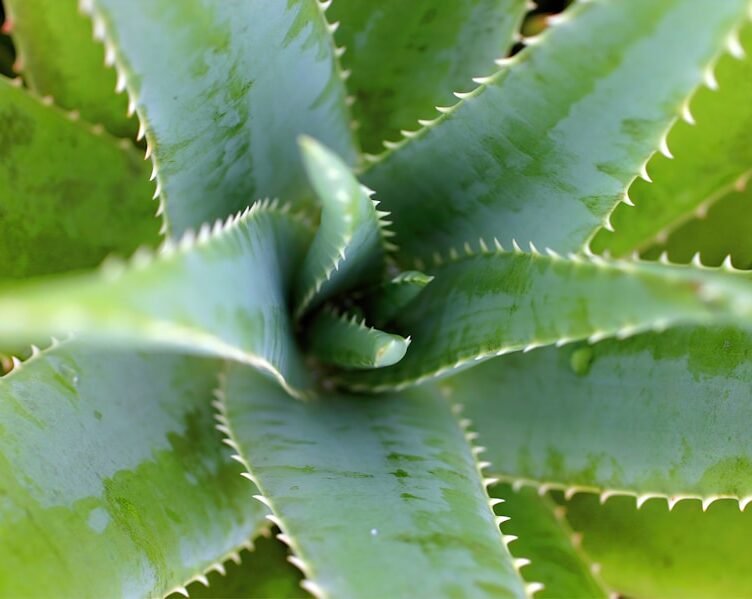Green therapy, also referred to as horticultural therapy, is a therapeutic approach that utilizes plants and gardening to enhance mental and physical well-being. The benefits of green therapy are multifaceted, with scientific research demonstrating that exposure to plants can significantly reduce stress, anxiety, and depression. A study published in the Journal of Physiological Anthropology found that interacting with indoor plants can decrease both physiological and psychological stress levels.
This is attributed to the calming effect of plants on the human brain, which helps to lower heart rate and blood pressure, promoting relaxation. In addition to stress reduction, green therapy has been shown to improve mood and increase feelings of happiness and overall well-being. The presence of plants in indoor spaces has been linked to enhanced concentration, productivity, and creativity.
Furthermore, caring for plants can provide a sense of purpose and accomplishment, which can be particularly beneficial for individuals struggling with mental health issues. Overall, incorporating plants into one’s home can have a positive impact on mental and emotional health, making it a valuable addition to any self-care routine.
Key Takeaways
- Pet-friendly plants can help reduce stress levels
- Green therapy has numerous benefits for mental health
- There is a strong connection between plants and stress reduction
- Choosing the right pet-friendly plants is important for creating a relaxing environment
- Caring for pet-friendly plants is essential for incorporating green therapy into your self-care routine
Understanding the Connection Between Plants and Stress Reduction
Air Purification and Respiratory Health
One of the primary reasons plants have a calming effect on humans is their ability to purify the air. Through photosynthesis, plants absorb carbon dioxide and release oxygen, improving air quality and promoting better respiratory health. Breathing in clean air has been shown to have a positive impact on stress levels, regulating the body’s stress response and promoting relaxation.
The Psychological Impact of Plants
The presence of plants in indoor spaces can also have a profound psychological impact on stress levels. Studies have demonstrated that simply being around plants can evoke feelings of tranquility and calmness, reducing feelings of anxiety and tension.
The Calming Effects of the Color Green
The color green, abundant in plant life, has been associated with feelings of peace and harmony. This is because green is often found in natural environments, such as forests and meadows, known for their calming and rejuvenating effects. Overall, the connection between plants and stress reduction is multifaceted, with both physiological and psychological factors playing a role in their ability to promote relaxation.
Choosing the Right Pet-Friendly Plants for Your Home
When it comes to incorporating pet-friendly plants into your home, it’s important to choose the right ones that are safe for your furry friends. Some common houseplants can be toxic to pets if ingested, so it’s essential to do your research before bringing any new plants into your home. Some pet-friendly plants that are safe for cats and dogs include spider plants, Boston ferns, and African violets.
These plants are non-toxic to pets and can help to improve air quality while promoting relaxation. In addition to choosing pet-friendly plants, it’s also important to consider the care requirements of each plant before bringing them into your home. Some plants require more sunlight and water than others, so it’s important to choose ones that align with your lifestyle and schedule.
For example, if you have a busy schedule and don’t have much time to care for plants, you may want to opt for low-maintenance options such as succulents or snake plants. On the other hand, if you enjoy spending time caring for plants, you may want to consider more high-maintenance options such as orchids or peace lilies. By choosing the right pet-friendly plants for your home, you can create a relaxing environment that promotes both mental and physical well-being.
Creating a Relaxing Environment with Pet-Friendly Plants
| Plant Name | Benefits |
|---|---|
| Aloe Vera | Improves air quality and can be used for skin care |
| Lavender | Calming aroma that can reduce anxiety and stress |
| Spider Plant | Removes toxins from the air and easy to care for |
| Rosemary | Improves memory and concentration |
Once you’ve chosen the right pet-friendly plants for your home, it’s time to create a relaxing environment that promotes stress reduction. One way to do this is by strategically placing plants in areas where you spend the most time, such as your living room or home office. By surrounding yourself with greenery, you can create a calming and peaceful atmosphere that can help to reduce feelings of stress and anxiety.
In addition to placing plants in high-traffic areas, you can also use them to create designated relaxation spaces within your home. For example, you could create a cozy reading nook with a comfortable chair and a few potted plants, or set up a meditation corner with a yoga mat and some hanging plants. By incorporating pet-friendly plants into these spaces, you can create a serene environment that is conducive to relaxation and stress reduction.
Overall, by strategically placing pet-friendly plants throughout your home, you can create a peaceful and rejuvenating environment that promotes mental and emotional well-being.
Incorporating Green Therapy into Your Self-Care Routine
Incorporating green therapy into your self-care routine can be a simple yet effective way to reduce stress and improve overall well-being. One way to do this is by spending time caring for your pet-friendly plants each day. Taking the time to water, prune, and repot your plants can provide a sense of purpose and accomplishment, which can be especially beneficial for those struggling with mental health issues.
Additionally, spending time in nature has been shown to have numerous mental health benefits, so consider taking your plants outside for some fresh air and natural sunlight. Another way to incorporate green therapy into your self-care routine is by practicing mindfulness while caring for your plants. Take the time to observe the growth and development of your plants, paying attention to their colors, textures, and scents.
This can help to promote feelings of calmness and presence, which can be especially beneficial for reducing stress and anxiety. Overall, by incorporating green therapy into your self-care routine, you can create a nurturing and rejuvenating practice that promotes mental and emotional well-being.
The Science Behind the Stress-Reducing Effects of Pet-Friendly Plants
Physiological Benefits
One of the main reasons why plants have a calming effect on humans is their ability to reduce physiological markers of stress. For example, studies have shown that simply being around indoor plants can lower heart rate and blood pressure, which are common indicators of stress.
Phytoncides and Psychological Effects
This is because plants emit phytoncides, which are airborne chemicals that have been shown to reduce stress hormones in the body. In addition to reducing physiological markers of stress, pet-friendly plants also have psychological effects that can promote relaxation. The presence of greenery in indoor spaces has been shown to evoke feelings of tranquility and calmness, which can help to reduce feelings of anxiety and tension.
The Therapeutic Power of Plant Care
Furthermore, the act of caring for plants has been linked to improved mood and increased feelings of happiness and well-being. This is because caring for living things can provide a sense of purpose and accomplishment, which can be especially beneficial for those struggling with mental health issues. Overall, the stress-reducing effects of pet-friendly plants are supported by both physiological and psychological research, making them a valuable tool for promoting mental and emotional well-being.
Tips for Caring for Pet-Friendly Plants in Your Home
Caring for pet-friendly plants in your home requires some attention and effort, but the benefits are well worth it. One important aspect of plant care is providing them with the right amount of sunlight. Most pet-friendly plants thrive in bright, indirect light, so be sure to place them near a window where they can receive plenty of natural sunlight.
If you notice that your plants are not getting enough light, consider investing in a grow light to supplement their needs. Another important aspect of plant care is watering them properly. Different types of pet-friendly plants have different watering needs, so it’s important to research each plant’s specific requirements.
Overwatering or underwatering your plants can lead to issues such as root rot or dehydration, so be sure to monitor their soil moisture levels regularly. Additionally, consider using a humidifier or misting your plants occasionally to provide them with the moisture they need to thrive. In addition to sunlight and water, it’s also important to regularly prune and repot your pet-friendly plants as needed.
Pruning helps to promote healthy growth and prevent overcrowding, while repotting allows your plants to continue growing in a larger container as they outgrow their current one. By providing your pet-friendly plants with the care they need to thrive, you can create a nurturing environment that promotes both mental and physical well-being. In conclusion, incorporating pet-friendly plants into your home can have numerous benefits for reducing stress levels and promoting overall well-being.
By understanding the connection between plants and stress reduction, choosing the right pet-friendly plants for your home, creating a relaxing environment with greenery, incorporating green therapy into your self-care routine, understanding the science behind the stress-reducing effects of pet-friendly plants, and caring for them properly, you can create a peaceful and rejuvenating environment that promotes mental and emotional health. Whether you’re looking for simple ways to reduce stress or seeking to improve your overall well-being, consider adding some pet-friendly plants to your home today.
FAQs
What is green therapy?
Green therapy, also known as horticulture therapy or ecotherapy, is a practice that involves connecting with nature to improve mental and physical well-being. This can include activities such as gardening, spending time in natural environments, and incorporating plants into living spaces.
How can pet-friendly plants help reduce stress levels?
Pet-friendly plants can help reduce stress levels by improving air quality, providing a sense of calm and relaxation, and creating a connection to nature. The act of caring for plants can also be therapeutic and provide a sense of purpose.
What are some examples of pet-friendly plants?
Some examples of pet-friendly plants include spider plants, Boston ferns, African violets, and bamboo palms. These plants are non-toxic to pets and can be safely incorporated into homes and living spaces.
What are the benefits of incorporating pet-friendly plants into living spaces?
Incorporating pet-friendly plants into living spaces can help improve air quality, reduce stress levels, increase feelings of well-being, and create a sense of connection to nature. Additionally, caring for plants can provide a sense of purpose and accomplishment.
Are there any potential risks or considerations when incorporating pet-friendly plants into living spaces?
While many pet-friendly plants are safe for pets, it’s important to research specific plants and ensure they are non-toxic to the animals in the household. Some plants may still cause mild digestive upset if ingested, so it’s important to place them out of reach of pets. Additionally, some pets may have allergies to certain plants, so it’s important to monitor their reactions when introducing new greenery into the home.








1 Comment